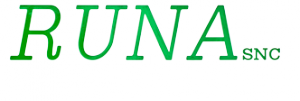Company
SUPPLIES AND PROCESSES FOR HATS
Hatters since 1908
The History…
Runa Company, was established by its founder in December 1, 1990, with a spirit of initiative and dedication to work and succeeded in expanding the Company from a national market into a wider international one.
New and innovative ideas match the old tradition milliner, without neglecting the quality and professionalism recognized for years now.
In Lombardy, and in particular in Monza, processing of wool felt hat has very ancient origins. Since
the Seventeenth century the artisans of Monza, were the most important manufacturers of hats in the region and in the Eighteenth century this activity became the driving force of the whole economy in Monza. It was Monza that was the sole supplier of large quantities of merchandise for the armies of Napoleon.
Contribute to the development of the Industry was the possibility of finding in the area manpower already trained to the processing of wool, activities practiced in that area (Brianza) since 1200.
In the second half of the nineteenth century the hat industry showed signs of development: there were at least 20 hatters. At the end of the century the industry in Monza reached such a consistency to export his hats all over the world and development continued in the following decades: in the early twentieth century the hat factories had more than doubled.
In 1911 were active 50 factories and were employed 4412 workers. Were also numerous factories for the corresponding production such as forms, liners and machinery.
Hat-making factories became the model with rational systems: raw wool entered and exited the finished hat.
The industrialists and trade unions in Monza, careful to vocational training, on 7 January 1913 ushered in the “School of the Hat” which, however, was short-lived. The students of the first course were 28 “of all ages from kids to mature men”.
The industrial and commercial development was inextricably linked to the “social phenomenon” of advertising.
The industrial sensed the importance of this weapon formidable to give greater impetus to the trade of hat Monza.
Since the most ancient times the hatters Monza had resorted to collections to help colleagues who are ill or unemployed. in 1832 established the first mutual aid society “Cappellari de Pio Istituto di Monza”, which provided medical care and subsidies and, to death of the member, gave the family a sum for funeral expenses.
The Pious Institute, in 1881 changed its name to “Company of the workers in felt hats of Monza” spread gradually its own area of intervention: From 1884 in fact bestowed sums in favor of hatters in the struggle for wage increases.
In 1886 established the education subsidy, which consisted in the distribution of textbooks and notebooks to the children of deceased members. In 1892 finally established the old age allowance for members who have exceeded 65 years of age.





